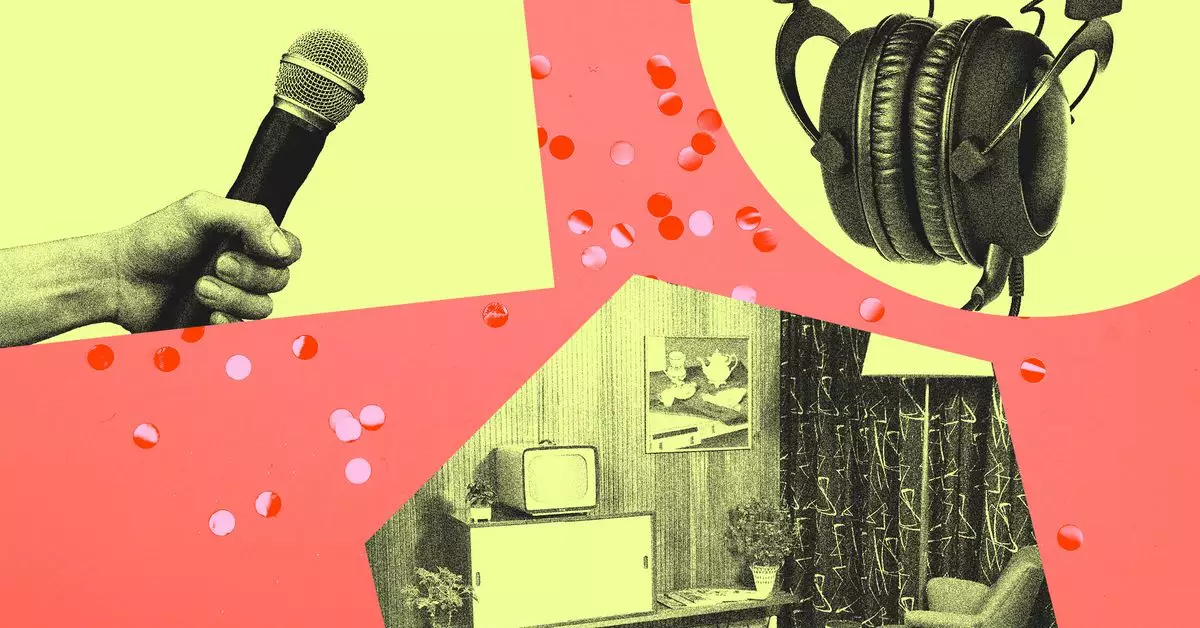In the rapidly evolving landscape of media consumption, podcasts have witnessed a significant transformation, particularly with the advent of video content. This change is spurred by a multitude of factors, including technological advancements, the growing preference for visual storytelling, and the influence of social media platforms like TikTok and Instagram. As we delve into the current state of video podcasts and ponder their future, we find ourselves at the intersection of creativity, technology, and evolving audience preferences.
As of 2024, the notion of podcasts has gradually shifted from being solely audio-focused to embracing visual components. While the video podcast format isn’t entirely new, mainstream networks and established media companies such as NPR and The New York Times are now integrating video elements into their traditional audio content. The goal is evident: to attract a broader demographic, particularly younger audiences who are accustomed to the visual richness of platforms like YouTube. Spotify’s recent initiative to incentivize podcasters for video content further illustrates the industry’s recognition of this trend.
This burgeoning video podcast landscape is not just about adding a camera to an audio setup; it reflects a strategic pivot towards engaging storytelling that harnesses both sound and sight. Producers are increasingly cognizant of how visual elements can enhance narratives and connect with audiences on new levels, leading to richer, multidimensional content.
One of the most profound shifts in the video podcasting framework involves the design of recording spaces. Many contemporary podcast studios mimic the comfortable vibe of living rooms or casual lounges. This strategy is foundational—an informal environment facilitates relaxed conversations that often characterize long-form interviews. Producers have embraced comfortable seating arrangements, utilizing couches and armchairs that replace traditional round tables.
This reimagining of the podcasting environment fosters a more organic dynamic between hosts and guests. The settings are usually adorned with decorations that add a personal touch, from bookshelves to indoor plants, echoing the aesthetic of intimate gatherings. Such visual appeal not only enhances the viewer’s experience but also invites them into a shared space that feels relatable and welcoming.
Moreover, the trend toward incorporating unique design elements, such as wooden wall slats or neon accent lighting, establishes a signature aesthetic for many shows. These features provide not only practical benefits—like sound absorption—but also serve to create a visually striking backdrop that reflects the brand identity of the podcast.
However, the marriage of audio clarity and visual appeal presents its own set of challenges—particularly regarding microphone placement and type. Traditional boom microphones often command attention, with their bulky presence detracting from the intimate atmosphere desired in video formats. This has led many podcasters to explore alternative solutions, such as handheld microphones, which lend a more candid feel to discussions.
While this approach can result in a vibrant and personable interaction, it runs the risk of awkward moments, especially with guests who may not be accustomed to handling a microphone. Producers must navigate the line between authenticity and proficiency to ensure fluid communication throughout the episode.
Yet, some key elements of the traditional podcasting setup, like large isolating headphones, continue to persist in video formats, drawing attention to their somewhat incongruent appearance against a dynamic visual landscape. The challenge moving forward will be finding equipment that marries functionality with a seamless onscreen presence.
Looking ahead to 2025, emerging trends suggest that podcast producers will seek greater differentiation from one another, pushing the boundaries of content creation. As the genre continues to mature, we may see a deviation from conventional aesthetics, with producers exploring varied audio-visual styles that resonate with their audiences.
The landscape may also witness the fusion of traditional podcasting and television, leading to a new nomenclature; what we currently label as “podcasts” might simply become “shows.” A potential move towards syndicating these innovations on linear platforms represents an intriguing development, indicating that the lines separating different media formats are becoming increasingly fluid.
Furthermore, technological advancements have democratized production capabilities, making it feasible for creators to harness high-quality output from simple setups. This will likely accelerate content experiments, as hosts venture beyond studio confines to record in unconventional environments, from cafes to outdoor settings, enhancing the relatability and reach of their content.
As AI tools continue to evolve, creators may find new ways to mitigate production challenges, allowing them to focus on crafting compelling narratives without being hampered by technical limitations.
The evolution of video podcasts is emblematic of broader shifts in media consumption, driven by audience preferences and technological innovation. As creators adapt to these trends, we can expect an exhilarating year ahead, filled with fresh concepts that will influence not just how we consume podcasts, but how we interact with the underlying stories they convey.

